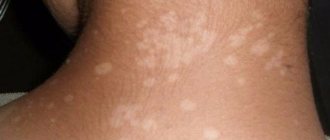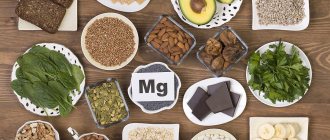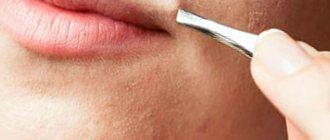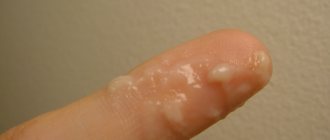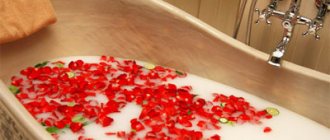The role of iron in the body
Iron is truly a friend and protector of man. As part of hemoglobin molecules, the element actively participates in the transport of blood to tissues and organs.
No less important functions of iron are:
- Impact on the functioning of the thyroid gland, and, as a result, improving the functioning of the endocrine system;
- Activation of the immune system;
- Prevention of anemia;
- Helps the body absorb B vitamins;
- The presence in the cells of the hormone myoglobin, which is responsible for the possibility of holding one’s breath, for example, under water.
- Destructive effect on harmful substances and toxins in the liver.
The meaning, role and functions of iron in the body
Researchers have long proven that iron is very important for every person, since the reserves of this substance in the body are very small, only 4g, and can also run out.
What is the importance of iron? Its main function is that it combines with oxygen and supplies oxygen to the tissues and internal organs of the body. It is also important that iron takes part in the synthesis of about 70 different enzymes, which are essential for the growth of the body.
Basically, a person replenishes the reserves of this substance with food. Once in the body, small amounts of iron are deposited as reserves in the bone marrow, spleen and liver. If the supply of this substance stops for some reason, the body first uses its reserves and then begins to consume iron from muscles, mucous membranes, skin, hair, etc.
Iron deficiency - symptoms and causes
A lack of iron is fraught with serious consequences, which are almost impossible to eliminate on your own.
Common signs of iron deficiency include:
- Constant fatigue and malaise that does not go away even after a full night’s sleep;
- Excessive agitation and short temper, or, on the contrary, tearfulness;
- Pale complexion, peeling skin;
- Concave, thin nails, brittle and falling hair;
- Dry mouth and esophagus, leading to difficulty swallowing food;
- Bloating, gastrointestinal ulcers;
- Tachycardia;
- Increased or decreased metabolism.
The causes of iron deficiency can be poor nutrition and fasting, prolonged bleeding, intense exercise - a large amount of iron leaves the body through sweat.
Problems in the gastrointestinal tract, improper metabolism of vitamin C, and excess calcium, zinc, phosphates and vitamin E in the body also lead to a lack of iron.
Most often, iron deficiency is observed in women, since the element is actively consumed during pregnancy - it is necessary for the intrauterine development of the fetus, and on critical days it is released with menstrual blood.
To avoid the symptoms listed above, it is necessary to monitor the amount of iron entering the body.
The daily dose of iron is:
- For adult men – 10 mg,
- For women – 16-20 mg.
For a child’s body, depending on age:
- 0-3 months – 4 mg;
- 7-12 months – 10 mg;
- 1-6 years – 10 mg;
- 7-10 years – 12 mg;
- 11-17 years – 15-18 mg.
In controlling the daily intake of iron, it is important not to overdo it, since an excess of the element also has consequences: cancer, heart problems, hepatitis and other serious diseases are possible. You can check the content of the element in the body using a biochemical blood test.
Characteristics of the metal and its norms in the body
Iron is found in bone marrow, blood, spleen and liver. About 3-5 g of microelement are concentrated in the body of an adult. The daily requirement for men is 10 mg, for women – 18 mg. During pregnancy, the norm increases to 30 mg. To obtain daily doses for vegetarians, the given figures must be multiplied by 1.8.
Now let's look at the required hemoglobin level. For men, the normal number is 130-160 g/l, for women – 120-140 g/l, for pregnant women and children under one year old – 110 g/l. The greater the iron deficiency, the lower the hemoglobin concentration.
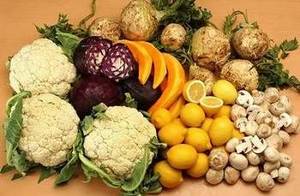
With heavy bleeding or menstruation, the need for this element increases significantly. With menstrual blood, women lose from 10 to 40 mg per month. During these periods, it is especially important to include iron-rich foods in your menu.
This element is absorbed in the upper intestine. For the process to be as efficient as possible, normal secretion of gastric juice is necessary. Therefore, with gastritis with reduced secretion, anemia or other painful conditions often occur. The reaction also depends on the type of iron. It can be heme (from animals) or non-heme (from plants). The first group is initially absorbed 15-35% better.
Prevention of anemia
To reduce the risk of developing IDA, you need to know several rules that will help avoid pathology. To prevent the occurrence of this condition, it is recommended:
- get rid of the smoking habit and minimize alcohol consumption;
- adhere to proper nutritious nutrition, as well as food intake;
- promptly treat diseases that can cause heavy bleeding;
- fully restore the body after significant blood loss;
- maintaining normal weight (in obesity, IDA often develops due to failures of the cardiovascular system);
- women during menstruation take medications with a high iron content;
- timely and high-quality treatment of viral diseases;
- refuse to work in hazardous industries that do not provide adequate protection for personnel;
- get enough rest and avoid overwork (if you are tired, the life cycle of red blood cells decreases).
By following all these instructions, you can significantly reduce the likelihood of anemia, which will allow you to always be cheerful, full of energy and productive in life. And to monitor your condition, it is recommended to periodically take a blood test to assess your hemoglobin level.
Indications for use
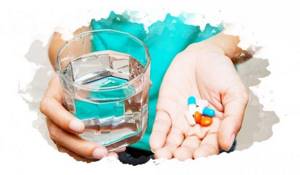
Iron supplements are prescribed for several indications:
- decreased iron levels in the blood, anemia (in adults and children, as well as pregnant women);
- infectious diseases occurring in acute and chronic forms;
- stimulation of hematopoietic processes during large blood losses;
- activation of the blood coagulation system;
- regulation of tissue respiration processes;
- stabilization of the cardiovascular system;
- normalization of liver function;
- increased mental and physical activity;
- improved appetite;
- eliminating feelings of fatigue and drowsiness.
Iron-containing preparations should never be used in the following cases:
- increased iron content in the blood and body;
- lack of iron absorption;
- chronic inflammatory processes, in particular kidney and liver diseases;
- blood cancers.
Contraindications and side effects
Vitamins for raising hemoglobin are contraindicated in the following cases:
- hemolytic and megaloblastic anemia;
- hypersensitivity reactions;
- hypoplasia detected in the bone marrow;
- excess iron;
- violation of the utilization of active substance compounds;
- infections due to the activity of gram-negative bacteria.
Uncomfortable sensations in the epigastrium due to the use of iron-containing drugs appear in pathologies of the digestive system. Among the most frequently occurring side effects are:
- bowel disorders;
- vomiting and nausea;
- darkening of stool.
Injection of iron supplements can provoke:
- hypotension;
- headache;
- thrombophlebitis;
- allergic reactions.
Indications for a blood test for serum iron
The level of serum iron is used to judge the total content of the microelement in the body. In serum, or blood plasma, it is bound to the protein transferrin. This is a transport that transports metal ions to depot organs. A serum iron test is needed to identify hidden iron deficiency anemia, chronic infectious diseases, and malignant tumors.
The amount of serum metal depends on:
- absorption rate in the gastrointestinal tract;
- reserves in the intestines and bone marrow;
- the rate of formation and destruction of hemoglobin;
- blood loss.
Indications for a blood test for serum iron:
- increased fatigue;
- pallor, flaking of the skin;
- dryness and brittleness of nails and hair;
- prolonged increase in body temperature;
- loss of appetite, weight loss.
These symptoms indicate diseases associated with iron deficiency. The analysis is also carried out to evaluate the effectiveness of anemia treatment.
Preparation for a blood test for serum iron
Preparation for a blood test for serum iron is necessary to obtain the most reliable result. It includes the following items:
- a week before the test, stop taking iron-containing medications;
- the analysis is taken outside of an active infectious disease;
- on the eve of the study, you should not smoke or drink alcohol;
- food as usual.
If a person has had a blood transfusion, the test must be postponed for 5-7 days.
Iron (Fe) is an essential trace element that is involved in the structure of hemoglobin and is not synthesized by the body. A person gets it from food. A person needs it to transport oxygen, protect the body against infections, and synthesize thyroid hormones. Fe is also important for the processes of hematopoiesis, mineral metabolism, and the normal condition of skin, nails and hair. Iron content standards for different groups of people, below which the alarm should be sounded, will be given below. The body of a healthy person contains about 4 g of iron. The main part of it is hemoglobin, a blood protein responsible for the transfer of oxygen to tissues. The other part is deposited in other proteins, ferritin, hemosiderin, as well as in the liver, muscles and spleen.
The level is higher in children than in adults, especially in newborns. With age, the level decreases, in older people there is a decrease in the indicator due to a decrease in required energy and changes in eating behavior. Pregnant women often experience a decrease in Fe.
Lower rates in women compared to men are explained by blood loss during menstruation and less developed muscles. Table with standards. Unit: micro mole/liter
If the indicator is below the norm, then the values are taken as reduced.
Factors that influence the result include: age, food intake, stress, exercise, medications, smoking and alcohol. As well as pregnancy, poor nutrition, chronic fatigue, vitamin deficiency and menstruation.
Lack of iron in the blood is called sideropenia.
How to replenish iron deficiency - foods and drinks that will help
Iron is found in most foods that we eat daily - meat and meat products, fish and seafood, eggs, cereals, bread, vegetables, fruits.
Foods and drinks that will help replenish iron deficiency:
| Product | Fe content per 100 g of product (in mg, approximate)* |
| Meat and meat products | |
| Pork liver | 20 |
| Chicken liver | 18 |
| Beef liver | 7 |
| Pork heart | 5 |
| Beef | 4 |
| Mutton | 3 |
| Pork | 2 |
| Chicken | 2 |
| Turkey | 1,5 |
| Fish and seafood | |
| Oysters | 9 |
| Mussels | 6,5 |
| Sardines | 3 |
| Canned sardines | 3 |
| Black caviar | 2,4 |
| Canned tuna | 1,5 |
| Cereals | |
| Bran | 6 |
| Oatmeal | 6 |
| Buckwheat | 3 |
| Lentils | 3 |
| Fruits/dried fruits/nuts | |
| Cashew nuts | 6,7 |
| Prunes | 3 |
| Persimmon | 2,5 |
| Dried apricots | 2,5 |
| Apples | 0,1 |
| Pomegranate | 0,3 |
| Beverages | |
| Cocoa | 14 |
| Blueberry juice | 0,7 |
| Apple juice | 0,1 |
| Pomegranate juice | 0,1 |
*According to USDA - United States Department of Agriculture.
How to replenish iron deficiency
If you notice the symptoms listed above, there is a possibility that your body does not have enough iron. Only a doctor can say for sure whether this is true. You cannot independently diagnose a deficiency of certain microelements, but the presence of these signs will be a reason to contact a medical institution.
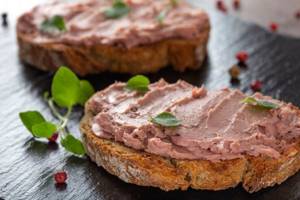
However, you can start eating right to prevent iron deficiency now. It is enough to include in your diet foods that are rich in it. They are quite simple, widely available and affordable for most buyers.
Iron-rich foods
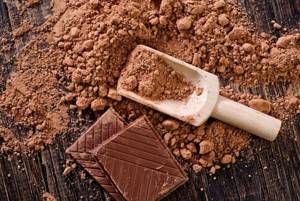
To prevent iron deficiency, the following are useful:
- nutmeg (60 mg of iron per 100 g of product);
- pistachios (60 mg per 100 g of product);
- halva (50 mg per 100 g of product);
- dried porcini mushrooms (35 mg per 100 g of product);
- cocoa powder (22 mg per 100 g of product);
- seaweed (16 mg per 100 g of product);
- spinach (14 mg per 100 g of product);
- light beef, lamb, pork (11 mg per 100 g of product);
- buckwheat (8 mg per 100 g of product);
- egg yolk (7 mg per 100 g of product);
- liver pate (6 mg per 100 g of product);
- bitter chocolate (5 mg per 100 g of product);
- beans (5 mg per 100 g of product);
- natural ground coffee (5 mg per 100 g of product).
Iron-rich foods can be consumed for prevention, but remember: only a doctor can prescribe treatment for iron deficiency!
What substances promote iron absorption?
Without additional exposure, the gastric tract can absorb no more than 10% of the element supplied with food, so you need to know how to increase the level of iron absorption by the body, in addition to eating foods high in iron.
How to improve iron absorption:
- Include in your diet foods that are rich in vitamins B6 and B12: vitamin B6 is found in fruit juices, nuts, vegetables, cereals, dairy products; beef and pork liver are rich in vitamin B12, as well as liver pates made from them, pork and beef kidneys, mackerel, mussels, sardines.
- Minimize the consumption of strong tea and coffee, especially after meals, as these drinks contain tannin, which binds iron and interferes with its absorption.
- Do not combine iron-rich foods with milk.
- Add unsweetened fruit juices to your diet for breakfast, lunch and dinner - they contain vitamin C, which promotes better absorption of iron.
- Eat a serving of pickles or sauerkraut at least once a day.
- Always discuss taking iron tablets with your doctor.
Secrets of successful iron absorption
Interesting fact: if you cook on cast iron cookware, you can increase the metal content by almost 9 times. But this does not mean success in getting rid of anemia.
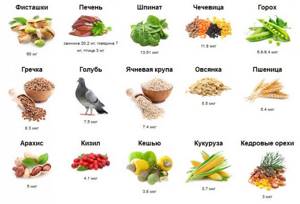
Ascorbic acid or vitamin C improves the absorption of the microelement. Therefore, it is recommended to eat meat dishes with vegetables, for example, red pepper, sauerkraut, onions and green onions. In addition, iron is “friendly” with organic acids, B vitamins, copper, manganese, cobalt, simple carbohydrates (lactose, fructose, sorbitol), amino acids (lysine and histidine).
After eating, drink orange, lemon or tomato juice, and then you will increase the amount of iron that is retained in the body. Honey, especially dark honey, will also help with anemia or pregnancy.
Substances contained in blueberries, spinach, sorrel, and cereals interfere with the normal absorption of iron. Therefore, it is better not to combine meat with bread and side dishes of pasta and cereals. It is better to give preference to potatoes, beans, cabbage and green peas. Dairy products are also not very good when it comes to replenishing your iron levels. Calcium neutralizes the element, so buckwheat with milk, beloved by many, in our case is a useless dish.
During pregnancy, which is accompanied by low hemoglobin levels, it is not recommended to drink strong tea and coffee with meals, as they bind iron. If you allowed yourself a glass of these hot drinks, it means you reduced the amount of the element by 62%. If you can't give up this habit, brew yourself green or herbal tea.
Iron deficiency during pregnancy
Among pregnant women, anemia (anemia) caused by iron deficiency is the most common. The disease may be asymptomatic, or may be accompanied by shortness of breath, dizziness, weakness and even fainting. With anemia, pregnancy complications are possible, resulting in premature birth and the possibility of miscarriage.
Iron deficiency in the mother also affects the health of the newborn: babies with iron deficiency are more susceptible to diathesis, allergies, pneumonia, and acute respiratory viral infections than their peers.
Pregnant women with a lack of iron in the body are under special control; the element is replenished by following a diet and special medications, which can only be taken under the supervision of a physician.
Lack of iron in the body: symptoms, how to replenish it
Many people face such a problem as iron deficiency in the body. Due to a lack of iron, the quality of life is significantly reduced, health deteriorates, a person experiences fatigue, symptoms of anemia may occur, etc. How do you know that you have an iron deficiency? How to deal with this? We will tell you in the article.
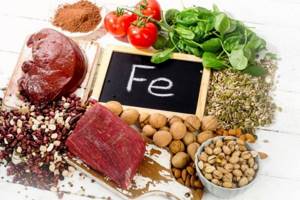
Why is it necessary?
Iron is an important element in the human body. It is thanks to it that the synthesis of hemoglobin molecules occurs, which supplies our skin cells with oxygen. Anemia may occur due to low hemoglobin levels.
The human body contains about 4 grams. Iron, which needs to be replenished daily. According to medical data, the daily requirement for iron is:
- 4-17 mg for children
- 10 mg for men
- 17 mg for women and 30 mg for pregnant women
How to replenish iron reserves?
Typically, iron deficiency occurs due to an unbalanced diet. Therefore, if your doctor has diagnosed you with iron deficiency, you first need to adjust your diet and eat more foods that contain iron. The most iron is found in red meat, liver, poultry and rabbit. As for other foods, it is recommended to eat eggs, legumes, whole grain cereals, shellfish, pink salmon, and mackerel. If we talk about fruits, the richest ones are apples, pears, grapes, pomegranates and peaches.
In order for iron to be better absorbed by the body, it is necessary to additionally take vitamin C, as well as limit the consumption of tea and caffeine.
An excellent source of iron is Pantohematogen Northern. This is a general tonic for the body, which is a natural source of iron. The product contains antlers and defibrinated deer blood, which are rich in active components and are easily absorbed by the body. Produces Pantohematogen Northern. Before using the product, be sure to read the instructions and consult with your doctor.
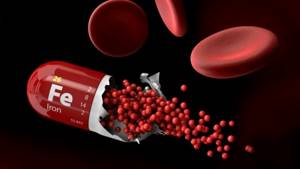
Symptoms of iron deficiency in the body
- Fatigue, shortness of breath
A person feels constant fatigue, even when he has had a good and long rest. Performance and concentration decrease. This happens due to the fact that the level of hemoglobin in the body, which is the main source of oxygen for internal organs, decreases. As a result, the body is in oxygen starvation.
- Pale skin
The skin becomes pale and takes on an earthy tint. This occurs due to the fact that hemoglobin decreases, the color of the blood becomes less intense, and as a result, the skin tone also changes.
- Headache
With a lack of iron, a person may often suffer from headaches and dizziness. This happens due to oxygen starvation, the brain does not receive the required amount of oxygen, blood flow is disrupted and, as a result, intracranial pressure can increase.
- High heart rate
Rapid heartbeat is the result of a lack of oxygen within the body. The heart begins to work harder to compensate for this deficiency.
- Leg movements
When at rest, you always want to move your legs, sometimes this can even be accompanied by itching in your legs.
If you notice these symptoms, consult a doctor and take a general blood test and check your hemoglobin level.
Iron deficiency in children
Iron deficiency in children occurs when less of the element enters the body than is consumed.
The causes of iron deficiency in childhood are:
- Poor nutrition;
- Lack of vitamin C;
- Problems with intestinal absorption;
- Excess calcium, zinc and vitamin E;
- Active consumption of iron during growth;
- Frequent injuries accompanied by bleeding.
Symptoms of iron deficiency anemia in a child manifest themselves in the form of general weakness, fatigue, drowsiness and irritability. Often children may see spots before their eyes, lose consciousness and complain of numbness in their arms and legs. With a pronounced deficiency of the element, shortness of breath occurs, appetite is lost, and even a desire arises to eat inedible food - chalk, soil.
Finally
You can saturate your body with iron using traditional methods:
- Collect nettle leaves and stems before flowering, wash and dry, then squeeze the juice out of them. Take 3 tablespoons of juice per day, and for a richer taste, you can add honey.
- Peppermint tea helps iron absorption, especially when combined with vitamin C.
- In cases where it is urgent to replenish the level of iron in the blood, a decoction of bay leaves and caraway seeds will help.
- A decoction of blackberries and vitamin tea made from rowan and rose hips are useful for iron deficiency. It is recommended to drink such drinks 1 glass 3 times a day.
- Some spices will help increase the amount of iron in the blood: dried dill, basil, coriander, thyme. They should be added to food 20 minutes before they are ready.
It is important to remember that the main rule for maintaining iron in the body at the proper level is a balanced diet. Discuss your diet with your doctor, do not self-medicate and always be healthy!
Tired of being tired? How to replenish iron deficiency in a woman’s body
Lack of iron in the body can cause a whole range of problems - from fatigue to iron deficiency anemia. The production of hemoglobin in the blood slows down, tissues and organs receive less oxygen. In complex cases, disturbances in the functioning of the cardiovascular, immune, digestive and urinary systems may occur.
The risk of iron deficiency and anemia is higher in women of reproductive age compared to men. This is due to regular blood loss during menstruation. The situation is aggravated if the discharge is abundant and prolonged. You should think about possible iron deficiency if the following symptoms occur:
- dry body skin;
- deterioration of the condition of nails and hair;
- fatigue, drowsiness;
- sticking on the lips;
- unusual food preferences.
When the level of hemoglobin in the blood decreases below normal, fainting, tinnitus, and rapid heartbeat are possible.
According to the recommendations of Russian doctors, a woman’s daily need for iron is 15-20 mg. The norm for each woman is individual, depending on her age, presence/absence of pregnancy, lifestyle and quality of nutrition.
A natural way to prevent iron deficiency in the body is a nutritious, balanced diet. To compensate for a slight iron deficiency, experts recommend increasing the proportion of foods rich in this microelement in the diet. These include:
- meat (especially beef);
- meat by-products (especially liver and kidneys);
- seafood (fish, mussels, oysters);
- eggs;
- buckwheat grain;
- apples;
- whole grains;
- nuts;
- legumes;
- leafy vegetables and others.
In this case, a distinction is made between the so-called heme (in products of animal origin) and non-heme (in plant foods). It is known that heme iron is absorbed much better than non-heme iron. For this reason, it is recommended that vegetarians carefully monitor the intake of sufficient iron in their bodies.
You should also pay attention to the compatibility of iron with other microelements. For example, vitamin C, folic acid, copper, and pepsin contribute to better absorption. Prevent - calcium, vitamin E, strong tea.
To determine the cause of iron deficiency, you should consult your doctor.

If you suspect that your body does not receive the daily requirement of iron, you can resort to the help of biologically active food supplements. As an additional source of iron, B vitamins, arbutin, flavonoids, tannins, it is recommended to use the natural fortified tonic Floradix Liquid Iron Formula. Floradix Liquid Iron Formula is manufactured by Salus-Haus in Germany in the town of Bruckmühl at the foot of the Bavarian Alps.
It contains a combination of aqueous extracts and juices of 16 plant species, enriched with vitamins and ferrous gluconate, which is well absorbed and does not cause constipation. Can be used by vegetarians.
Floradix Liquid Iron Formula tastes good and is economical to use. It is recommended to take 10 ml orally per day.
Lemeshko Yanina Konstantinovna, nutritionist, member of the National Association of Dietetics and Nutritionists:
Iron deficiency leads to tissue hypoxia, decreased activity of many enzymes, and increased fatigue, hair loss, weakened nails, and pale lips and skin can be observed. Often there is an addiction to the smell of kerosene, gasoline, acetone, car exhaust gases, as well as a perversion of taste: the desire to eat raw minced meat, coal, dough, chalk, starch, salt. It is necessary not only to ensure the supply of iron with food, but also to observe the conditions for it suction. For example, tea and coffee reduce iron absorption by 40-60%, while ascorbic acid improves it. It makes sense to drink a beef steak with orange juice rather than a cup of coffee. Fructose also promotes better absorption of heme iron. Phytates (substances from fibers or components of wheat, rice, corn, nuts) reduce iron absorption by 50%. Milk, egg and soy proteins, as well as EDTA (a preservative in mayonnaise, sauces, seasonings, carbonated drinks) have a similar effect. Remember that an unbalanced diet leads to many pathological changes in the body in the future. Correcting the diet and timely use of additional sources of iron and vitamins in the form of balanced complexes will compensate for their deficiency in the body, and therefore help prevent possible adverse consequences of iron and vitamin deficiency.
[1] Anemia - a hidden epidemic, translation from English. M.: Mega Pro, 2004.
Dietary supplement NOT A MEDICINE
How to increase iron in the blood with medication?
In the case of a severe decrease in hemoglobin, the doctor may advise, in addition to correcting the diet, to take a short course of vitamin complexes or other medications that help quickly normalize the level of iron in the blood. Keep in mind that it is better not to select such remedies on your own, since you can cause hypervitaminosis, which is no less dangerous. The most effective ones were:
- Ferroplex - in addition to iron levels, it also corrects the level of folic acid, so it can be recommended to increase iron in the blood during pregnancy or during pregnancy planning.
- Hemofer is also sometimes prescribed to pregnant women, as it additionally has a positive effect on the immune system. This drug is not recommended for children and adolescents.
- Fenyuls is a complex product based on vitamin C, fructose, folic acid and iron.
- Tardiferon - helps to cope with the deterioration of the condition against the background of severe blood loss, prescribed to women after difficult childbirth.
- Globiron is a well-known remedy for the treatment of anemia, used in adults and children over 3 years of age.
Keep in mind that all of the drugs listed are not absolutely safe, have a large list of contraindications and possible side effects, so they must be taken strictly according to the doctor’s instructions and for a short course.
What are the dangers of iron deficiency?
The most well-known consequence of iron deficiency is anemia, but, unfortunately, this is not the only consequence of this disease. First of all, its lack negatively affects the immune system, a person begins to get tired faster, children’s ability to learn worsens, and endurance decreases. Researchers report that many cases of stomach cancer have been linked to a lack of iron in the body.
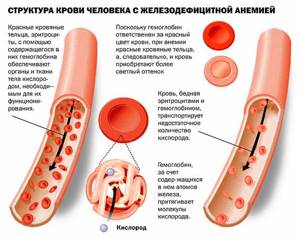
The lack of this substance in the body in women contributes to a decrease in the activity of the thyroid gland, resulting in an inability to lose excess weight. In addition, a study was conducted, at the end of which it turned out that girls with insufficient amounts of iron in the body who took iron supplements had increased learning ability and improved memory.
Iron preparations for parenteral administration

In some situations, taking iron supplements orally is undesirable or even impossible. In this case, they resort to parenteral administration of drugs (intravenously or intramuscularly). Indications for this type of therapy are as follows:
- the patient is unconscious, or his mental state makes it impossible to take drugs orally;
- exacerbation of gastric ulcer, gastrointestinal bleeding;
- nonspecific ulcerative colitis or other severe intestinal diseases in which absorption is impaired;
- condition after removal of part of the stomach;
- there is a need to quickly saturate the body with iron after massive blood loss.
In the latter situation, drugs are administered into a vein or muscle until the anemia is considered “mild”, and then the patient is transferred to oral forms.
Considering that with this route of administration the entire drug enters the bloodstream, the dose is reduced and is no more than 100 mg per day, but it is calculated individually taking into account body weight and the glomerular filtration rate of the kidneys. The doctor should regularly monitor the level of hemoglobin, red blood cells and serum iron to prevent overdose, which is no less dangerous than deficiency. For parenteral administration, the drugs Venofer, Ferbitol, Ferruk Lek, Zhektofer, etc. are produced.
What rules should you follow when taking iron supplements?
“The doctor prescribed me to take iron supplements because my hemoglobin was low, but he told me to follow the rules. Which ones?”
Alina, Vitebsk.
— In the world, 2 billion people suffer from anemia, mainly iron deficiency.
Most often it occurs in women of reproductive age, children and pregnant women, as well as in the elderly. With a lack of iron, concentration is impaired, chronic fatigue appears, activity and performance decrease, colds occur more often, nails and hair become brittle, facial skin turns pale and appetite disappears. To avoid anemia, it is necessary not only to replenish the daily loss of iron associated with the continuous exfoliation of the cells of the mucous membrane of the gastrointestinal tract, but also to consume much more than what is consumed. Firstly, of all the iron that enters the body, approximately 10% is absorbed. Secondly, some iron is not absorbed at all. The daily requirement for iron is 18 mg for children, 33 for pregnant women, 15-18 for non-pregnant women, and 10 for men. Women need iron more than men because a significant amount is lost during menstruation. And in a pregnant woman, this element is spent both to cover the increased needs of the body and to provide for the fetus.
Iron deficiency is usually associated with poor nutrition and pathological processes in the gastrointestinal system, when absorption and metabolic processes are impaired. But it is necessary to remember that it is impossible to solve the problem 100% with the help of diet therapy, although certain products are recommended to patients when an iron deficiency condition is established. When compiling a diet, one should take into account not the total iron content in food, but its form, which determines absorption. For example, the absorption of iron from meat products is 17 - 22%, and from plant products - only 2 - 3%. Especially useful in this sense are buckwheat, chicken and beef meat, beef tongue, veal liver, sturgeon caviar, fish, apples, rose hips, beans, carrots, and cottage cheese.
To compensate for the lack of iron in the body, doctors often prescribe iron-containing drugs, the action of which is aimed at quickly increasing the number of red cells (erythrocytes) to normal. Tablets, syrups, oral solutions and only in exceptional cases injections are used. And we need to prepare ourselves for a long course of treatment. Typically, the first stage until hemoglobin levels normalize takes 4 to 6 weeks. The optimal therapeutic dose, according to WHO recommendations, is 120 mg per day for mild to moderate anemia. Unjustified increase in dose does not increase the effectiveness of treatment, but produces side effects (pain in the heart, increased heart rate, allergic reactions, vomiting, nausea). Such drugs are contraindicated in cases of arterial hypertension of the 2nd and 3rd degrees, heart failure, and liver diseases. For anemia caused by infection, these drugs are ineffective. After the body is saturated with iron, it is necessary to continue maintenance therapy for another 2 - 3 months at a dose of 30 - 60 mg of elemental iron per day. Thus, the full course takes from 3 to 5 months. And at this time, it is necessary to conduct a clinical and laboratory examination to monitor the increase in the level of hemoglobin, serum ferritin, and iron.
Iron preparations taken orally are divided into two main groups: ionic iron-containing (ferrous iron salts) and non-ionic (ferric iron complex). This division is based on the mechanism of absorption in the gastrointestinal tract. Salt preparations interact with food components and medications, so they are used 1 hour before meals. The general recommendations are as follows. Tablets and capsules should be swallowed without chewing and washed down with water. Clarified (without pulp) fruit juices are also allowed. But you should absolutely not drink it with milk, kefir and other milk-based drinks due to the high calcium content. Because iron does not combine with it, as well as with magnesium and, therefore, with preparations containing these macroelements. There is no need to take pills with tea or coffee. There are a number of medications that should not be combined with iron supplements. For example, some antibiotics (tetracycline, doxycycline), almagel, vikalin. Iron tablets should be taken 30 minutes before meals or 2 hours after. Then they are better tolerated and absorbed more efficiently in the gastrointestinal tract.
Olga PERESADA, Professor of the Department of Obstetrics and Gynecology of BelMAPO, Doctor of Medical Sciences.
Soviet Belarus No. 26 (25161). Wednesday, February 8, 2017
Transfusion of donor red blood cells
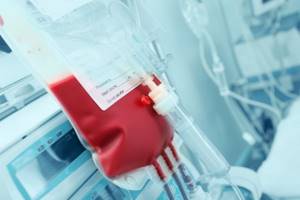
This type of replenishment of iron deficiency is a reserve type of therapy, because it is used in cases where the patient’s condition is regarded as severe. It can occur as a result of massive blood loss after injury, surgery, difficult childbirth, etc. Usually, transfusion of donor red blood cells is resorted to when the hemoglobin level is below 50-60 g/l, that is, the patient has severe anemia. However, in this case we are talking about acute blood loss, because with chronic blood loss, the human body gradually adapts to oxygen deficiency, and red blood cell transfusion is not always indicated for such patients.
The advantages of this procedure include the speed of the effect - one blood transfusion can immediately increase the hemoglobin level by 20-40 g/l. If necessary, it is repeated several times until the patient recovers from a critical condition. However, the real disadvantage of transfusion of donor red blood cells is the risk of an allergic reaction, including anaphylactic shock. It is extremely rare that severe complications arise if the patient’s blood type or Rh factor was incorrectly determined (which can happen in an emergency situation, in a strong hurry).
The option for correcting iron deficiency should be determined by the doctor after examination, determining the level of hemoglobin, red blood cells, serum iron and, if possible, ferritin. At the same time, he is obliged to refer the patient for a comprehensive examination to determine the cause of iron deficiency anemia, which never develops in an absolutely healthy person.
How to increase iron in the blood using folk remedies?
Recommendations for correcting nutrition can be classified as methods of alternative medicine, although they are also taken into account in official medicine, even if the latter places more emphasis on drug treatment. But besides them, there are several other safe ways to improve hemoglobin levels by increasing iron levels:
- Squeeze juice from fresh beets, 4 green apples and 2 carrots. Divide the resulting mixture into 2 parts, drink half in the morning on an empty stomach, and the rest half an hour before lunch. This remedy will have to be used daily for 3 weeks.
- A mixture of rose hips and rowan berries (half and half) in the amount of 2 tbsp. l. fill with cold water (0.5 l). Let it boil, pour into a thermos or place in a preheated oven. Leave for 2 hours, drink warm the day before. The course of treatment is 2 weeks.
- Pour boiling water over the crushed dry nettle raw material (1 tbsp per 300 ml), let it brew for half an hour. Take 50 ml warm before main meals.
Decoctions of parsley and dill, St. John's wort, plantain, and yarrow are also considered beneficial for iron levels. From time to time it is worth making tea based on clover flowers (!) or preparing a mixture of walnuts and honey, using 2-3 tsp of it. daily.
